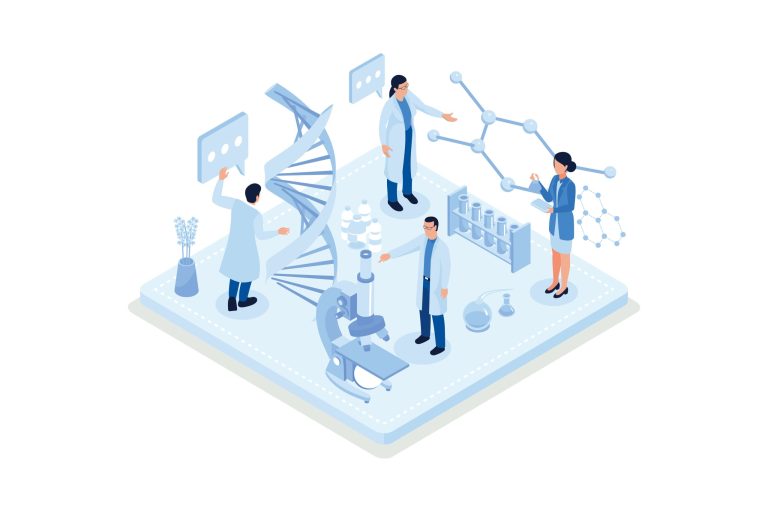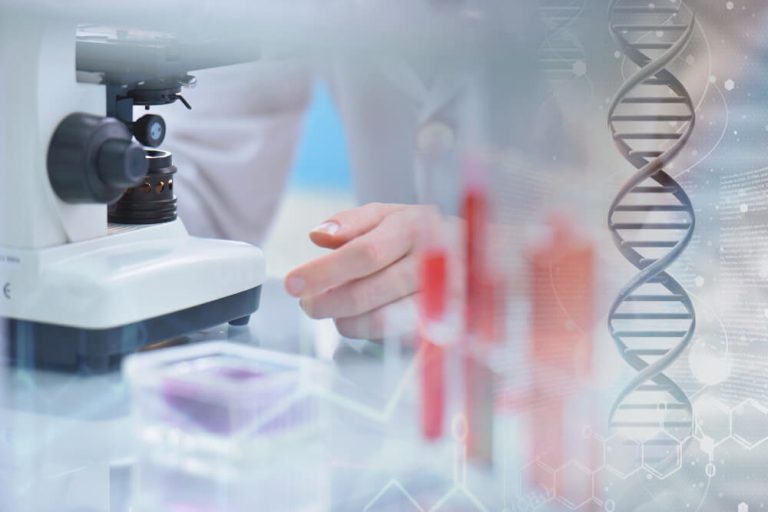The Future is Now: How Regenerative Medicine is Redefining Health and Healing
Imagine a form of medicine that does not just manage symptoms but aims to repair, replace, and restore damaged tissues and organs from within. This is not science fiction. It is the rapidly advancing field of regenerative medicine, a branch of healthcare that harnesses the body’s own incredible power to heal itself. This revolutionary approach is shifting the paradigm from simply treating disease to actively rebuilding health at a cellular level.
At its core, this discipline seeks to understand and amplify the natural healing processes that are already coded into our biology. When you get a paper cut, your body instinctively knows how to mend the skin. Regenerative therapies take this innate capability and apply it to more complex problems, from worn-out knee joints to chronic conditions that were once considered irreversible.
By focusing on the root causes of dysfunction, regenerative medicine offers a profound new perspective on wellness and longevity. It represents a move towards personalized, proactive healthcare, where the goal is not just to extend lifespan but to enhance healthspan, the period of life spent in good health. This field is a cornerstone of modern anti-aging and functional medicine, providing tools to help our bodies function optimally for as long as possible.

What Exactly is Regenerative Medicine?
Regenerative medicine is a broad term that encompasses various scientific methods and clinical therapies designed to prompt the body to regenerate its own cells and tissues. The fundamental principle is that our bodies contain the necessary building blocks and instructions for self-repair. However, due to severe injury, chronic disease, or the natural aging process, this ability can become overwhelmed or diminished.
This medical approach works to supplement and stimulate these internal repair systems. Instead of introducing foreign substances or devices to patch a problem, it provides the biological components and signals needed for the body to fix itself. This could involve introducing a concentration of healing cells to an injured area or using biological scaffolds to guide new tissue growth.
Ultimately, the goal is to restore normal function. For a patient with osteoarthritis, this means rebuilding cartilage and reducing inflammation, not just masking pain with medication. For someone with a non-healing wound, it means stimulating the growth of new, healthy skin. It is a proactive and restorative model of care.

What are the Core Technologies and Therapies?
The field of regenerative medicine is diverse, utilizing several key technologies that can be used alone or in combination to achieve therapeutic goals. These approaches are at the forefront of medical innovation, offering new hope for a wide range of conditions.

How do Stem Cells Work?
Stem cells are perhaps the most well-known component of regenerative medicine. They are the body’s raw materials, undifferentiated cells that have the remarkable potential to develop into many different cell types in the body. This ability makes them a powerful tool for repair and regeneration.
There are different types of stem cells, but the ones most commonly used in clinical practice today are adult stem cells, particularly mesenchymal stem cells (MSCs). These cells can be harvested from a patient’s own body, typically from adipose (fat) tissue or bone marrow. This autologous use, meaning from the patient’s own body, significantly reduces the risk of rejection or adverse reactions.
Once collected and concentrated, these stem cells can be reintroduced into an area of injury or disease. They do not just magically transform into new tissue. More importantly, they act as powerful signaling agents. They release a cascade of growth factors and anti-inflammatory proteins that orchestrate the healing process, reduce inflammation, modulate the immune system, and call upon the body’s local repair cells to get to work.

What is Platelet-Rich Plasma (PRP) Therapy?
Platelet-Rich Plasma, or PRP, is another foundational regenerative therapy that uses the healing power found within a patient’s own blood. Our blood is composed of red cells, white cells, plasma, and platelets. Platelets are famous for their role in clotting, but they are also tiny powerhouses packed with hundreds of growth factors.
PRP therapy involves a simple blood draw, similar to a routine lab test. This blood is then placed in a centrifuge, a machine that spins at high speed to separate its components. This process isolates and concentrates the platelets within a small volume of plasma, creating a solution that is many times richer in growth factors than whole blood.
This platelet-rich plasma is then carefully injected into the site of injury or tissue damage. The concentrated growth factors immediately signal the body to initiate a robust healing response. They stimulate tissue repair, promote the formation of new blood vessels, and reduce inflammation, making PRP a popular treatment for orthopedic injuries like tendonitis, ligament sprains, and mild to moderate osteoarthritis, as well as for aesthetic applications like skin rejuvenation and hair restoration.

What is Tissue Engineering?
Tissue engineering is a more complex and futuristic branch of regenerative medicine that combines cells, engineering, and material sciences to improve or replace biological tissues. It often involves the use of scaffolds, which are biocompatible materials that act as a template for new tissue growth.
Imagine a biodegradable scaffold shaped like a piece of cartilage. Scientists can ‘seed’ this scaffold with a patient’s own cells in a lab environment. The cells multiply and form new cartilage tissue, adopting the shape of the scaffold. This engineered tissue could then be implanted into a damaged joint.
While growing entire complex organs like hearts or kidneys for transplantation is still a long-term goal, tissue engineering is already being used in simpler applications. It is used to create skin grafts for burn victims and to help repair bone and cartilage. This technology holds immense promise for solving the organ shortage crisis and for treating conditions that require the replacement of large sections of tissue.

What Conditions Can Regenerative Medicine Potentially Treat?
The applications for regenerative therapies are expanding rapidly as research uncovers new possibilities. While it is not a cure-all, it offers a powerful new therapeutic option for many challenging conditions, primarily by reducing pain, improving function, and enhancing the body’s ability to heal.
One of the most common areas of application is in orthopedics and sports medicine. Athletes and active individuals suffering from conditions like tennis elbow, rotator cuff tears, Achilles tendonitis, and knee osteoarthritis have found significant relief and improved function through treatments like PRP and stem cell therapy. These therapies can help them avoid or postpone major surgery.
Chronic pain management is another key area. Patients with degenerative disc disease, facet joint arthritis in the spine, and other chronic musculoskeletal pain sources are increasingly turning to regenerative options. By addressing the underlying inflammation and tissue degeneration, these treatments can provide lasting relief where traditional methods may have failed.
Beyond orthopedics, the field is making inroads into aesthetics and anti-aging medicine. PRP facials, often called ‘vampire facials’, use the growth factors in plasma to stimulate collagen production and rejuvenate the skin. Similarly, PRP injections into the scalp can stimulate dormant hair follicles and promote new hair growth for both men and women.
Researchers are also exploring the potential of regenerative medicine for more complex systemic diseases. Early-stage studies are investigating its role in modulating the immune system for autoimmune disorders, repairing heart muscle after a heart attack, and even slowing the progression of certain neurodegenerative diseases. It is a frontier of medicine filled with incredible potential.

Is Regenerative Medicine Safe and Effective?
Safety and efficacy are paramount concerns for any medical treatment, and regenerative medicine is no exception. When performed by a qualified and experienced medical professional using the patient’s own cells (autologous therapy), treatments like PRP and adult stem cell procedures have a very high safety profile. The risk of rejection or allergic reaction is virtually nonexistent because the therapeutic material comes from your own body.
The main risks are similar to any injection-based procedure, such as localized pain, swelling, or a small risk of infection at the injection site. These are typically minor and temporary. The effectiveness of the treatment, however, can vary significantly based on the specific condition being treated, its severity, the patient’s overall health, and the specific protocol used.
This is why a thorough evaluation by a knowledgeable physician is crucial. A reputable clinic will provide a realistic outlook on potential outcomes and will not make outlandish promises. They will confirm that you are a good candidate for the therapy and will create a personalized treatment plan tailored to your specific needs.
It is also vital for patients to understand the regulatory environment. The FDA has specific rules governing cellular and tissue-based products. Patients should seek out clinics that are transparent about their practices and adhere to established guidelines. Staying informed about the legal and regulatory landscape of regenerative products helps ensure you are receiving care that is both safe and compliant.

How Does One Become a Practitioner in This Field?
The path to becoming a skilled regenerative medicine practitioner requires a deep commitment to ongoing education and specialized training that goes beyond a standard medical curriculum. Healthcare professionals who want to enter this exciting field must build a strong foundation in cell biology, immunology, and the specific protocols for each therapy.
For many clinic owners and physicians, the first step is understanding the business and operational aspects. Learning how to start a regenerative medicine clinic involves much more than just the medical procedures; it includes mastering patient acquisition, ethical marketing, and efficient clinic workflow.
Formal education is a cornerstone of credibility and competence. Universities are now offering dedicated programs to meet this demand. For instance, a practitioner might pursue continuing medical education through a respected institution like the Boston University CME program, which offers focused courses on the latest advancements.
For those seeking a more profound, research-oriented understanding, graduate-level programs are available. The programs at Wake Forest School of Medicine are a prime example, offering in-depth training in the science and application of regenerative technologies. Additionally, government bodies provide valuable resources, such as the professional training materials offered by the NIH Stem Cell Task Force, to ensure practitioners stay current.
Networking and staying abreast of global innovations are also critical. Attending major industry conferences like the World Stem Cell Summit allows professionals to learn from world-renowned experts and see emerging technologies firsthand. Finally, a crucial component of practice is a firm grasp of the ethical considerations. This includes comprehensive legal and ethical training for advanced preventative screenings, which ensures patient care is delivered with the highest standards of integrity and responsibility.

What Should Patients Look for in a Regenerative Medicine Clinic?
Choosing the right clinic and practitioner is the single most important factor in having a safe and potentially successful regenerative medicine experience. With the growing popularity of these treatments, it is essential for patients to do their due diligence and select a provider with the right credentials, experience, and ethical standards.
First, verify the credentials of the medical staff. The procedures should be performed by a licensed physician, such as a medical doctor (MD) or doctor of osteopathic medicine (DO), with specific training and extensive experience in regenerative therapies. Do not hesitate to ask about their training, how many procedures they have performed, and their specific protocols.
A reputable clinic will conduct a comprehensive initial consultation. This should include a thorough review of your medical history, a physical examination, and potentially diagnostic imaging like MRI or ultrasound. They should take the time to explain your condition, discuss all available treatment options (both regenerative and traditional), and answer all of your questions clearly.
Be wary of clinics that use high-pressure sales tactics or promise guaranteed cures. Regenerative medicine is not a miracle; it is a medical science. A trustworthy provider will set realistic expectations about the potential outcomes, the timeline for seeing results, and the possibility that you may need more than one treatment.
Finally, transparency is key. The clinic should be open about the type of therapy they are recommending, where the cells or platelets are sourced from, and the exact process they use. A patient-centered clinic will empower you with information, making you an active partner in your own healthcare journey.

What is the Future of Regenerative Medicine?
The future of regenerative medicine is incredibly bright, with innovations on the horizon that could fundamentally change how we treat disease and aging. The field is evolving at a breathtaking pace, moving from theory and research into tangible clinical applications that were once thought impossible.
Technologies like 3D bioprinting are advancing, holding the potential to one day print custom organs on demand using a patient’s own cells, which would eliminate transplant waiting lists and the risk of organ rejection. Gene editing tools like CRISPR could be used to correct genetic defects at the source, preventing hereditary diseases before they even manifest.
We are also likely to see more sophisticated and targeted therapies. Scientists are working on ‘smart’ stem cells that can be programmed to seek out specific sites of damage or disease in the body. The use of exosomes, the tiny communication vesicles released by cells, is another exciting frontier, offering a way to deliver the healing signals of stem cells without using the cells themselves.
As our understanding of the biology of aging deepens, regenerative medicine will play an increasingly central role in promoting longevity and healthspan. The focus will continue to shift from treating sickness to proactively maintaining wellness, repairing cellular damage as it occurs, and keeping our bodies functioning at their peak for as long as possible. This is not just about living longer; it is about living better.
Regenerative medicine is a paradigm shift, moving healthcare from a model of management to one of restoration. It represents a journey back to our biological roots, leveraging the healing intelligence that resides within us all. While the field is still young, its potential to alleviate suffering and enhance human health is truly profound.
Frequently Asked Questions

Who is the ideal candidate for this type of advanced injection training?
This training is specifically designed for licensed medical practitioners who perform or wish to perform musculoskeletal injections as part of their practice. This includes physicians in sports medicine, orthopedics, pain management, and physical medicine, as well as physician assistants and nurse practitioners working in these fields. The primary prerequisite is the legal authority to perform injection procedures and a desire to incorporate regenerative treatments like PRP or stem cells.
While prior experience with ultrasound is beneficial, it is not always required as many courses cater to a range of skill levels, from novice to intermediate. The curriculum is structured to build a strong foundational understanding of ultrasound physics and "knobology" before moving to advanced techniques. The ultimate goal is to equip clinicians with the confidence and competence to use ultrasound for safer and more effective procedures.

How does ultrasound guidance enhance patient safety and comfort during regenerative procedures?
Ultrasound guidance significantly improves patient safety by providing real-time visualization of the needle’s path in relation to critical anatomical structures. This allows the practitioner to clearly identify and avoid nerves, arteries, and veins, dramatically reducing the risk of neurovascular injury. Furthermore, it confirms that the needle tip is precisely located within the target tissue, preventing unintended injection into adjacent areas like tendons or joint capsules.
This precision directly translates to a more comfortable patient experience and better clinical outcomes. Accurate initial placement often reduces the need for multiple needle passes or repositioning, minimizing procedural pain and tissue trauma. By ensuring the regenerative product is delivered exactly where it is needed, ultrasound guidance maximizes the therapeutic potential of the treatment and improves the likelihood of a successful result.

What can I expect from the hands-on practice component of the training course?
The hands-on scanning and injection practice is the most critical part of the training, allowing you to apply theoretical knowledge in a practical setting. These sessions typically feature a very low student-to-instructor ratio to ensure every participant receives personalized guidance and immediate feedback. You will spend significant time practicing needle visualization and hand-eye coordination on both inanimate training phantoms and live human models.
This immersive practice is designed to build procedural confidence across a wide range of applications. You will learn and rehearse scanning protocols and injection approaches for various joints and soft tissue targets, such as the shoulder, knee, hip, and elbow. The objective is to develop a repeatable, high-level skill set that you can immediately and safely integrate into your clinical practice.
Discover the most comprehensive functional medicine training, longevity training, and biohacking certification programs designed specifically for healthcare professionals, medics, and clinic owners who want to master regenerative medicine protocols and anti-aging therapies.







